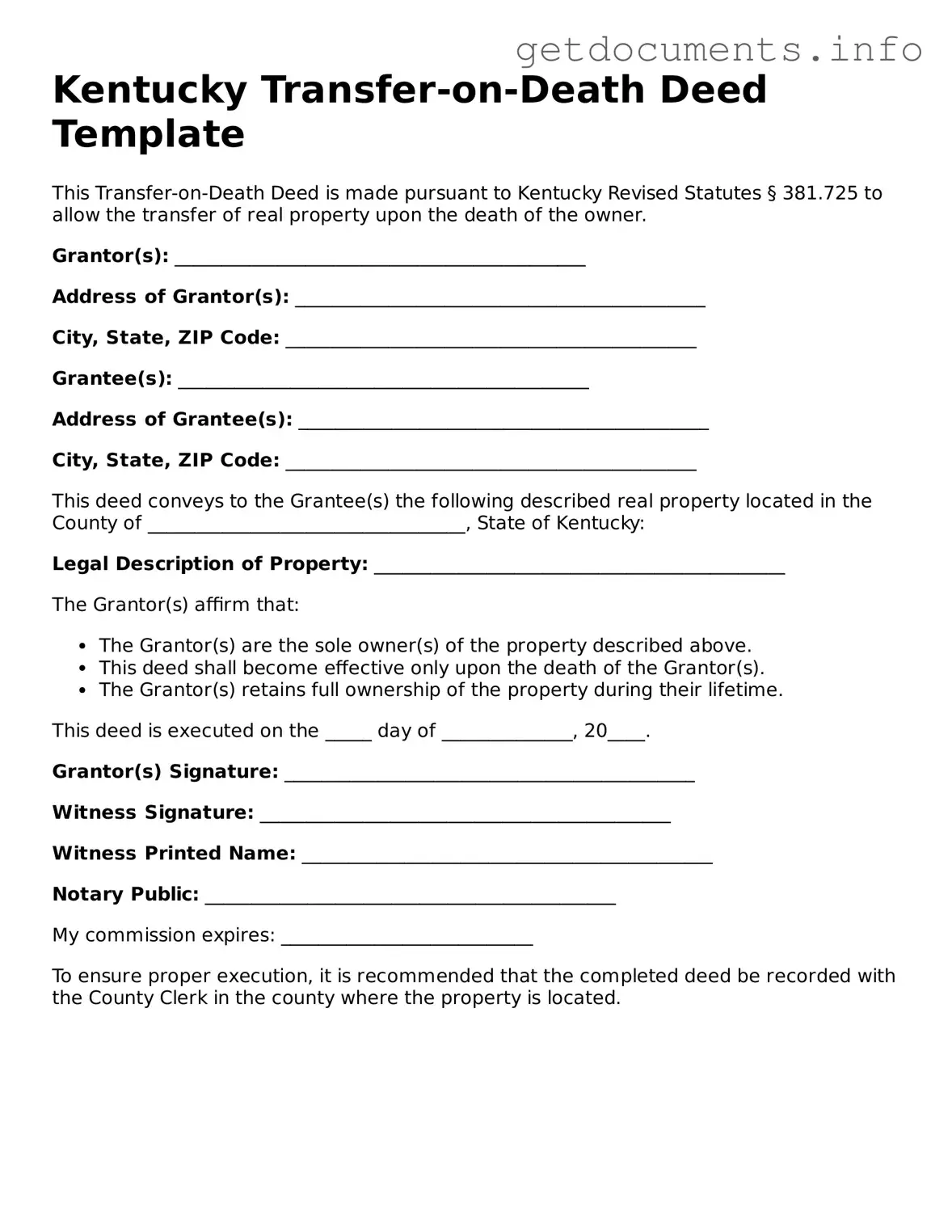Free Transfer-on-Death Deed Template for Kentucky
A Kentucky Transfer-on-Death Deed form is a legal document that allows property owners to transfer their real estate to designated beneficiaries upon their death, without the need for probate. This form provides a straightforward way to ensure that your property is passed on according to your wishes, simplifying the process for your loved ones. If you're ready to take control of your estate planning, consider filling out the form by clicking the button below.
Access Transfer-on-Death Deed Editor
